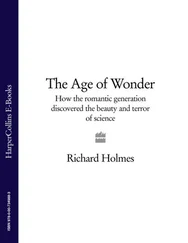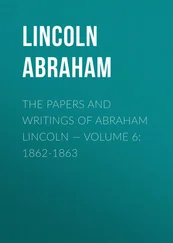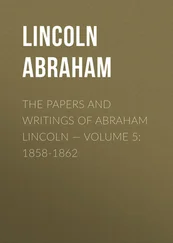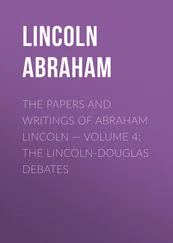According to a plausible and widely held tradition, Vijayanagar was founded by two adventurous brothers, Harihara and Bukka, sons of Sangama, the chieftain of Kampili. But the founding of a Hindu kingdom was not the destiny that their early political career had portended, for it was as minions of the Delhi Sultanate, and not as champions of Hindu political revival, that they first appeared in history. The story is that the brothers were captured by Muhammad Tughluq during his peninsular campaign, and were taken to Delhi, where they were converted to Islam, and then sent back to Kampili to administer it as imperial officers. But about a decade later, when the Delhi Sultanate’s power in the peninsula crumbled, the brothers lost their power base. However, they then rehabilitated themselves by opportunistically reverting to Hinduism and founding a Hindu principality on the southern bank of Tungabhadra. In this venture they were crucially helped by the blessing and support of Vidyaranya, a revered Hindu sage of the region. Vidyaranya, it is said, advised Harihara, the older brother, to adopt Virupaksha, a Shaivite deity, as his patron god, and rule the kingdom as a surrogate of the god, so as to overcome the persisting public misgivings about the legitimacy of he taking on the role of a Hindu raja, because of his former conversion to Islam.
Harihara’s Shaivite affiliation of was a factor in he choosing a site on the southern bank of Tungabhadra for his capital, for it was close to the temple of Virupaksha. Fortuitously — though Harihara would not have known anything about it — the region where the capital was founded had ancient historical associations going back to the period of the third century BCE Mauryan emperor Asoka, whose rock inscriptions have been found along Tungabhadra nearly fifty kilometres from the site chosen by the raja for his capital. The capital was named Vijayanagar, City of Victory, and the kingdom itself came to be known by that name. The kingdom and the city would indeed live up to the portent of that name.
Strategically the site was an excellent choice for the capital of the new kingdom, for the river border provided it a barrier against any military menace that might emanate from the north, the main direction from which it could expect invasions. Further, the site was bordered by three rocky hills, the slopes of which were covered with granite boulders, and that provided another impenetrable defence to Vijayanagar. Over a period of about a decade, Harihara linked together the three hills by building between them high and broad cyclopean walls bordered with deep ditches, so the city became virtually impregnable on all sides. In fact, only once in its long history was Vijayanagar city ever stormed.
Harihara was crowned king in Vijayanagar in April 1336. Under him and his successors the kingdom grew rapidly in territory and power, and at its height covered virtually the entire southern half of peninsular India, from river Krishna down to the tip of India, covering three distinct linguistic regions — of Telugu, Kannada and Tamil — so the kingdom is often described as an empire. The dynasty that Harihara founded was named Sangama dynasty, in memory of the raja’s father, and it ruled Vijayanagar for a century and a half, till around 1486. This dynasty was succeeded by three other dynasties — Saluva, Tuluva and Aravidu — and the kingdom endured in all for over three centuries, till the mid-seventeenth century. But it became considerably attenuated after its calamitous defeat at the hands of the Deccan Sultanates in the battle of Talikota in 1565. In its final phase even this small kingdom fragmented into a number of principalities, all of which were obliterated during the expansion of the Mughals and the Marathas into South India in the late seventeenth century.
THE KINGS OF Vijayanagar were Telugus, but the expansion of their kingdom was mainly into the Kannada and Tamil regions to its south, for it was beyond their power to expand northward to any significant extent, as the territory there was mostly under the rule of powerful Muslim kingdoms, initially under the Delhi Sultanate, and subsequently under the Bahmani Sultanate and its successor kingdoms. Its southward expansion too at first seemed impossible, for right next to it on the south was the large and long-established Kannada kingdom of Hoysalas, which was just then reemerging as an independent kingdom after having been subject to the Delhi Sultanate for a couple of decades. Hoysalas paid no attention to the founding of Vijayanagar, as their king Ballala III was then preoccupied with a military campaign in the Tamil country, to expand his kingdom southward. Moreover, Vijayanagar was at this time a far too insignificant a principality for Ballala to bother about. Even when Harihara began to flex his military muscle and make incursions into the northern districts of the Hoysala kingdom, Ballala ignored him as a peripheral nuisance, and not a threat to his kingdom.
But presently the scene changed altogether. Ballala’s southern campaign ended in disaster, as he was defeated and killed by the sultan of Madurai. And this soon led to the collapse of the Hoysala kingdom. But what was misfortune for Hoysalas was good fortune for Harihara. He now sent his army to invade the Hoysala lands and, overcoming the often unexpectedly stiff resistance of the feudal chieftains there, eventually, in 1346, in a campaign lasting some three years, annexed the whole kingdom.
Vijayanagar thus became the leading Hindu kingdom of the peninsula, indeed, of the whole of India. This achievement was celebrated by Harihara and his brothers by holding a grand victory festival, vijayotsava , in 1346. But presently, in the very year after Harihara’s victory celebration, there arose, immediately to the north of Vijayanagar, a Muslim kingdom, the Bahmani Sultanate, with which, and with its successor sultanates, Vijayanagar would be embroiled in a two centuries long see-saw military conflict, which would finally end in the virtual destruction of the Vijayanagar kingdom.
Harihara died around 1356, after a reign of twenty years. He had no children, and so was succeeded by his brother Bukka I. The Vijayanagar kingdom had been built by the joint effort of Harihara and his four brothers, and its provinces were held by the raja’s brothers as virtually independent rulers, as their share of the kingdom, and which their children in turn inherited and divided among themselves as their patrimony. Bukka viewed this as a pernicious arrangement which would eventually lead to the fragmentation and collapse of the kingdom. He therefore appointed his own sons as provincial governors whenever the opportunity arose, so that the kingdom could be more effectively brought under royal control.
There was considerable expansion of the territory of Vijayanagar under Bukka. He extended it southward by invading and annexing the Sultanate of Madurai, so the territory of Vijayanagar extended as far south as Rameswaram; he also extended the kingdom eastward by annexing portions of the Reddy kingdom of Kondavidu. He was not however successful in his clash with Muhammad Shah, the Bahmani sultan. According to Ferishta — whose account might be biased in favour of the sultan — Bukka was routed by the sultan and had to agree to peace on the sultan’s terms. However that be, the vast expansion of the territory of Vijayanagar under Bukka, and the diversity of the ethnic groups in it, turned the kingdom almost into an empire.
An equally important aspect of Bukka’s reign was that he was a liberal and progressive monarch. Though he was a staunch Hindu, who proudly bore the title Vedamarga-Pratishthapaka (Establisher of the Path of the Vedas), and sought to revitalise Hinduism by commissioning fresh commentaries to be written on ancient Hindu texts, it was not blind faith but open, earnest enquiry that marked his religious outlook. Most commendably, he considered it his duty as king to extend equal protection and patronage to the people of all religions and sects in his kingdom, such as Jains and Buddhists, and even to the followers of non-Indian religions like Jews, Christians and Muslims. Bukka also had broad cultural interests and was a keen patron of poets, such as Nachanna Soma, the renowned Telugu poet of the age.
Читать дальше












